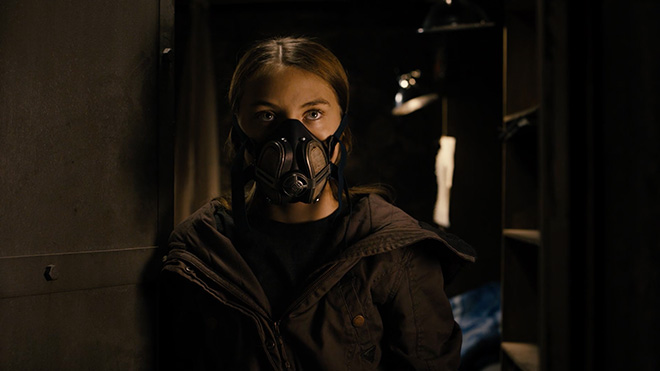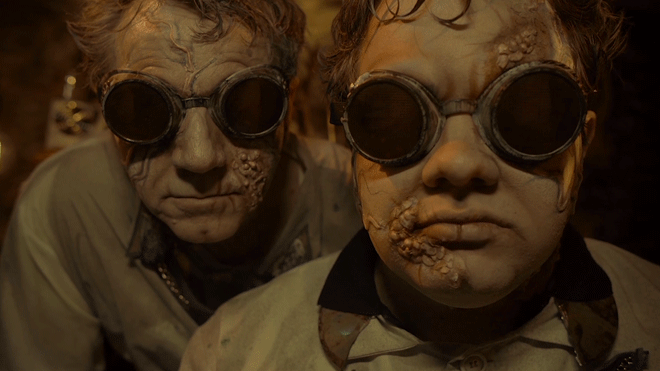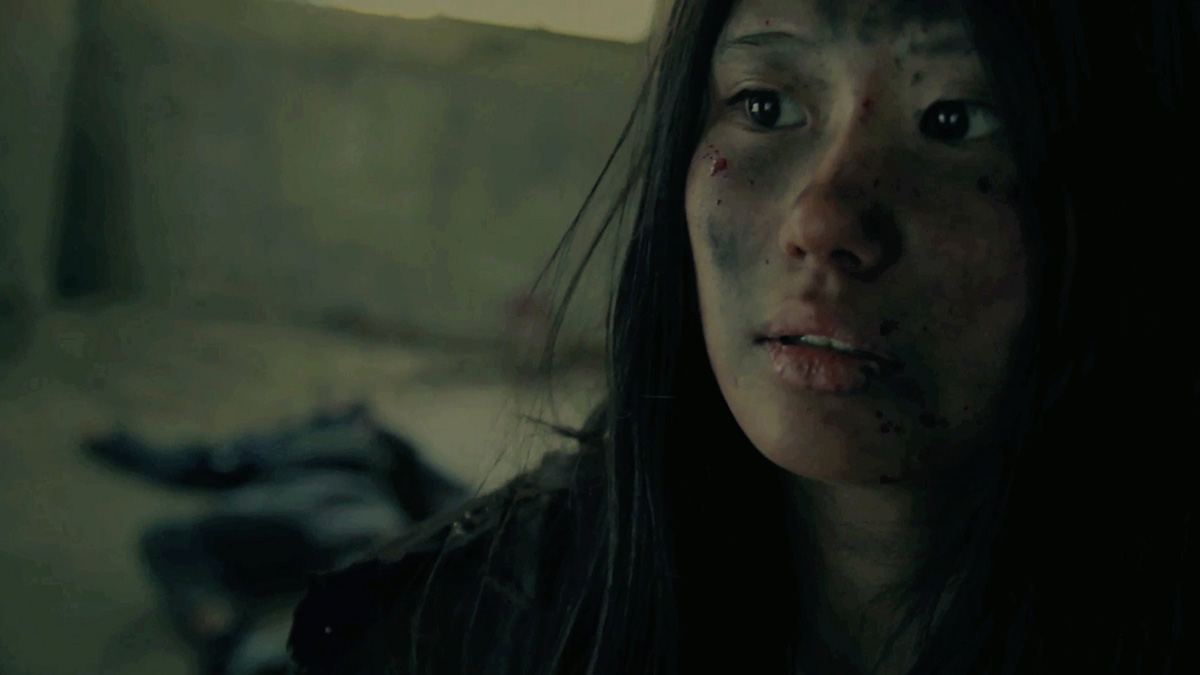The world as we knew it no longer exists.
The tagline may sound like a news header straight out of today’s newspaper. Fremde takes us much further into a post-apocalyptic world, but definitely portrays a scary world if things don’t turn around. This student film story revolves around Marie, her father and her little brother who live in an underground bunker hidden deep in the woods. When the father accidentally shoots a stranger while on a hunt, he sees himself faced with only two options.
At home, Marie tends to the wounds of the unconscious man. While the father distrusts the stranger, Marie is drawn to him. For her, the bunker feels not like a home but a prison from which she yearns to break free. Can this stranger be her long awaited hope?
But when three marauders invade the bunker, Marie is not sure what or who her new friend really is.
FREMDE is the 3rd of 4 mandatory films we (Tim Dünschede/director and me – Holger Jungnickel/DP) had to shoot at our film school University of Television and Film Munich. It marks the end of our third year at the school. As we didnt find a producer at our school we decided to collaborate with Patrick Schorn who was a production student at DFFB Berlin. This was sparked by a coincedental meeting of him and Tim at a Berlinale Party in 2015. At this time we wanted to shoot a different script what had to be canceled after a lot of work and scouting through Europe was put into it. As our school cut budgets in half we simply couldn’t afford it anymore. In September 2016 we decided to search for something new. This time we had to be fast because we had to shoot the same year.
Luckily we found this compound with over 100 bunkers and a lot untouched nature surrounding it
Because of this time pressure we reached out to all filmschools in Germany for existing scripts connected to the genres thriller, mystery and sci-fi. We found this script at the Filmakademie Ludwigsburg. So we ended up being the first co-production of three major filmschools in Germany. Also not an easy to task, because the only thing schools have of their films is rights :). At the end of September we had a rough script by Marc Vogel. In mid October castings and intense location scouting began. We saw nearly all bunkers around an in Berlin. Luckily we found this compound with over 100 bunkers and a lot untouched nature surrounding it. Beginning of December er startet shooting for 10 days. After a long and hard editing process which we had to go through to compensate the short amount of time put into finessing the script we finished the film on Christmas 2017. In 2018 we had great festival tour and were able to catch some worldwide awards.
The process of FREMDE was a really tough one and gave us a lot of lessons. My most favorite one being that your film is only as good as your cast and crew. We did shoot in below zero temperatures exposed to everything that came upon us. I really was afraid that the crew was not coming back after the first weekend, but they did. They all saw something happening and fell in love with passion everybody put to work day after day. Even though nobody earned anything they put their “sweat“ (at 0°C ;)) and blood into it. That gave us a lot of energy for the post production process to not stop until we found the best possible solution for everything.
At thirty minutes long it may seem a little frightening to some viewers. But the attention to detail and high quality values will make sure you focus right through. Despite the difficult conditions, the cast lead by Emma Bading and Jürg Plüss deliver some incredible and cold-blooded performances.
Technical Aspects
The film was shot on Alexa Mini with Hawk Anamorphics by Vantage. It was a mixture of Hawk V-Lites and V-Plus. For extreme tele shots I used an anamorph converted Nikon Lens which made 400mm T 2.8 out of the 200mm T2. On some days i. e. the wolf day there was a Alexa XT as B-Cam for additional coverage. The lighting package was quite small. We used a lot of practicals (cheap LED-Lights from Amazon and fluorescend tubes) and augmented them with one bicolor 1×1 LED and Kino Flos. For the shafts of light we used small HMIs because they had to fit into small air channels. More flexible movement in the swamp and woods I used a MAXIMA Gimbal from Arri provided by neoFlight. For smaller moves we used a self made truss slider system.




